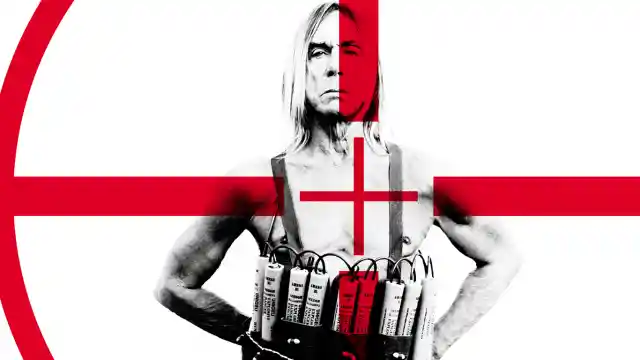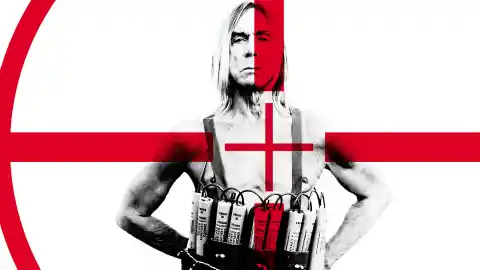Okay, since I pissed off the industrial crowd, let’s see what you hardcore punk rockers think about this list. I’m only naming bands that I’ve actually heard or seen, so if I miss a few of your favorites – sorry. This is, again, only my opinion. In addition, I’m only listing bands who were pioneers and not followers, so don’t expect to see Green Day. And off we go!
Number Ten: The Cramps. While the Cramps never took home the big paycheck like some of their CBGB’s alumni, they definitely carved out a place in punk history. Formed in 1979, they practically invented a new genre called “pyschobilly,” which borrowed heavily from earlier artists such as Link Wray, Dick Dale and the Sonics. Lyrically, they were fun, campy and absurd as they dealt with topics as sexual innuendo and preposterous b film humor. Lead by the husband and wife team, Lux Interior and Poison Ivy, the band bounced around Europe and the States for a few years before releasing their debut, Songs the Lord Taught Us in 1980. Critics jumped with glee over the album as the band’s originality shined through on tracks such as “I Was a Teenage Werewolf” and “Zombie Dance.” They paid homage to the past with covers of “Rip it Up” and “Fever.”
Following the 1986 release of A Date with Elvis, they embarked on a European tour. While the band remained at cult status in the US, they were huge in the UK, and if you needed proof, they sold out the Hammersmith for six consecutive nights. Though they did find brief commercial success on both sides of the pond with “Bikini Girls With Machine Guns,” it was short lived in America. The group would release 8 studio albums and each one followed their signature groove to the delight of fans. The last one, Fiends of Dope Island, was released on their own label in 2003. The Cramps disbanded in ’09 after the untimely death of Lux, but are credited with reintroducing rockabilly to the masses.
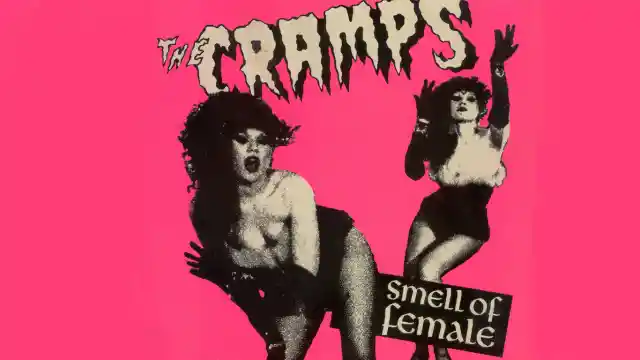
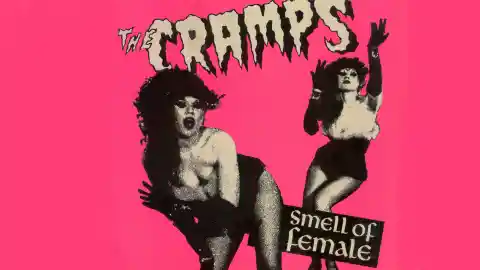
Number Nine: The Patti Smith Group. While Patti Smith shrugs off the title of “celebrity,” her contribution to American punk cannot be denied. Poet, songwriter, performer, and visual artist are just some of the labels that have been pinned on Smith. Like most punk performers out of New York, Smith had to cut her teeth at the mecca known as CBGBs. It wasn’t long after meeting Lenny Kaye that she formed the Patti Smith Group. Deeply impacted by poet Arthur Rimbaud, her lyrics were dark and haunting. The group was signed by Clive Davis in 1979 and began work on their debut, Horses. With a mix of punk and spoken word, the band covered Van Morrison’s Them song “Gloria.” Though it was barely recognizable except the chorus, Smith put her own unique spin on the tune as she borrowed a line from an earlier poem she penned called Oath, ‘Jesus died for somebody’s sins, but not mine.’ Horses got mixed reviews, but as punk grew, the album was reexamined.
While her next album underwent horrible reviews, she bounced back with her most commercially successful album to date, Easter, which housed the single “Because the Night,” which was co-written by Bruce Springsteen. She would close out the decade with Wave, which featured “Dancing Barefoot” (later covered by U2). While she sat out for most of the ’80s, Smith managed to get out the album, Dream of Life, which contained the single “People Have the Power.” In 1996, Smith was ready to get back to work and recorded Gone Again. To date she has recorded eleven studio albums, three live albums and six compilations. She has received a bevy of awards, including induction into the Rock and Roll Hall of Fame in 2007.
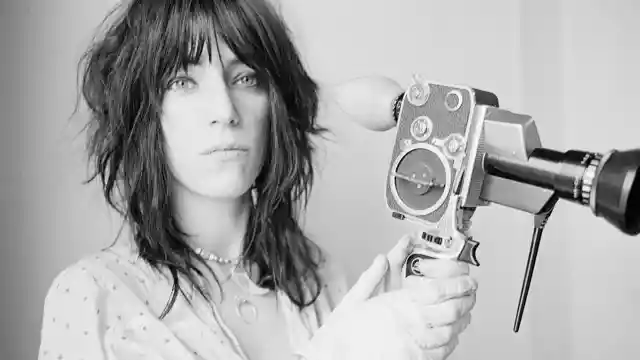
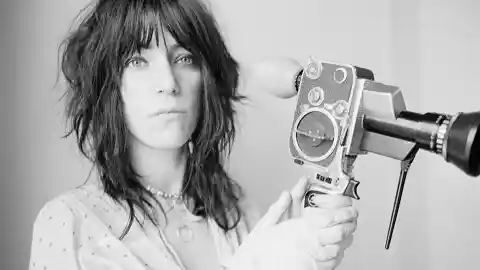
Number Eight: Buzzcocks. After seeing the Sex Pistols perform, the Buzzcocks were enthusiastic and decided to start their own band in 1976. The Manchester band’s first gig was opening for the Pistols later that same year. That September, they were asked to play a festival called the 100 Club Punk Festival along side bands such as the Clash, the Damned and the Vibrators. Unlike their heroes, the Buzzcocks could actually play and produced catchy three minute pop songs with a punk edge. Throughout their short career, the group produced three highly acclaimed albums starting with Another Music in a Different Kitchen, which produced the top 40 hit, “I Don’t Mind.”
They started on their sophomore effort, Love Bites, just six months after their debut. The album found the band discovering their sound as they came into their own. The group’s third and final release, A Different Kind of Tension, hit the racks in 1979. The album was well received and charted okay, but with so many other projects and opportunities, the Buzzcocks disbanded in ’81. They would reunite over the next 30 years releasing the occasional album and tour. The latest came in 2014, as the band released The Way.
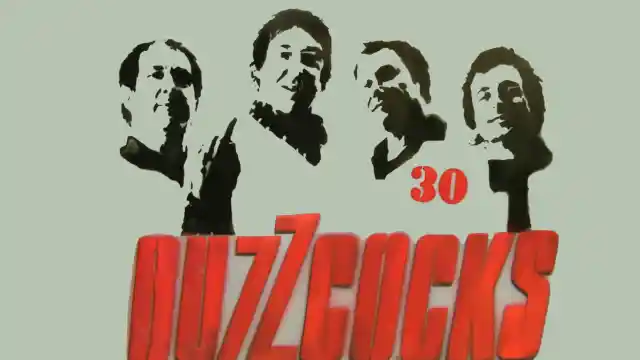
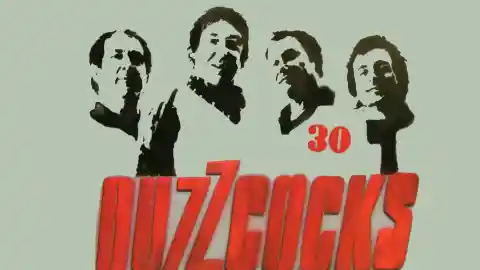
Number Seven: The Damned. If you enjoy a little goth with your punk, you might have enjoyed the Damned. The English outfit formed in 1976 and were fronted by the creepy vocal styles of Dave Vanian. Their first show was opening up for the Pistols in 1976. The band would be invited to play at Malcolm McLaren’s show, the 100 Club Punk Festival later that same year. Just weeks before the Pistols issued their single, “Anarchy in the UK,” the Damned beat them to the punch with “New Rose.” Their debut, Damned Damned Damned was released in ’77 and was produced by Nick Lowe. The Damned joined T-Rex in America to promote the album. The band’s follow-up was a disappointment to fans and critics.
Subsequently, the Damned disbanded in 1978. Though it was a brief split, they lost key players in the process, most notably Lemmy, who would go on to form Motörhead. They officially reformed in 1979, and after playing their first show, the band entered the studio to record Machine Gun Etiquette. The album did well, and the band was stronger then ever. They would continue their reign as innovators of punk through the ’80’s, and while they took a break in the ’90’s, they were now being covered by such bands as Guns ‘N Roses and the Offspring. And the 2000’s saw them writing, recording and touring making them the longest running punk band in history.
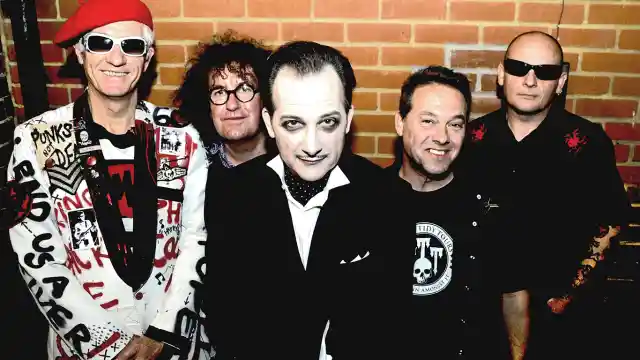
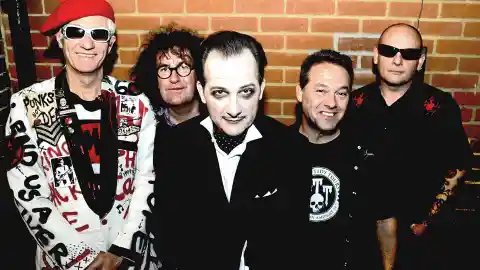
Number Six: New York Dolls. While not universally known as a “punk” band, the New York Dolls had a definite influence on the scene. As a part of the glam movement, they cross-dressed in women’s clothing. However, if you thought this would stop them from kicking your ass, you were in for a world of hurt. While the original lineup crashed and burned after only two albums, New York Dolls and Too Much Too Soon, they would influence the likes of Kiss, Sex Pistols and the Ramones. After garnering interest from managers and record companies, they were asked by Rod Stewart to join him at a concert in the UK. The band knocked it out of the park and returned to New York to sign with Mercury Records. The Doll’s first album was produced by Todd Rundgren and had all the makings for a hit, but the public and the press didn’t buy into the hype.
Their second offering didn’t do much better, and the boys found themselves without a label. In the middle of a tour, guitarist Johnny Thunders and drummer Jerry Nolan, left the band in 1975, and while Johansen tried to hang on, the Dolls played their last show in 1977. However, with loads of unreleased material and live recordings, the band was able to stay in the public eye. Some of the albums post breakup included Lipstick Killers, which was made up of demos and Seven Day Weekend, which featured more demos and outtakes from the New York Dolls and Too Much Too Soon sessions. They would also go on to release seven live albums throughout the years. Morrissey (former frontman of the Smiths) would bring the band back together in 2004, and the band would go on to release three more albums.
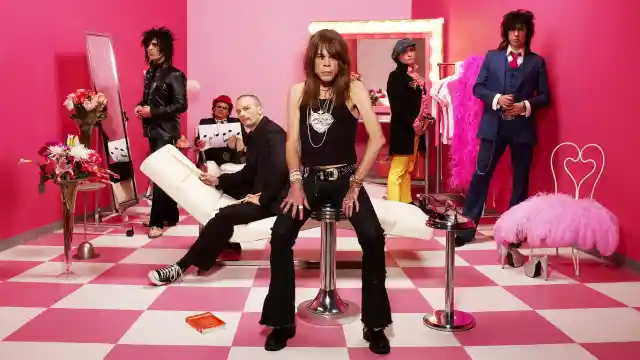
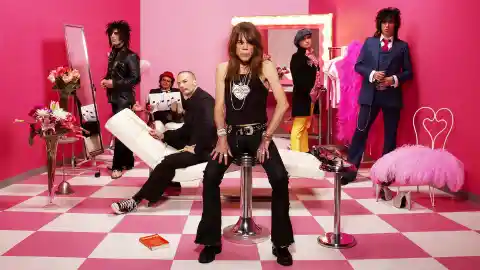
Number Five: The Velvet Underground. Again, not predominantly known as a punk band, the Velvet Underground would go down as protopunk whose influence would be felt for decades. Formed in 1964 as Beatlemania was sweeping the nation, but Reed was quoted as saying “I never liked the Beatles, I thought they were garbage.” Reed was more interested in experimenting and pushing the boundaries of music without being influenced by anyone. The Velvets gigged around New York, eventually securing a spot at the Cafe Bizarre. In 1965 Andy Warhol became the group’s manager and suggested that they feature German singer, Nico, perform a few songs. She was allotted three tracks on the debut simply called The Velvet Underground & Nico. While the album was experimental, delays with the release date pushed it so far that it would have to compete with Sgt. Peppers Lonely Hearts Club Band, thus going virtually unnoticed.
After the Velvets fired Warhol, they recorded their second album minus Nico. White Light/White Heat was released in 1968, and while it entered the charts, it did so at the bottom, 199, and only lasted two weeks. The Velvet’s third self-titled release was a bust as Reed moved the band into a folk rock style, which didn’t sit well with longtime supporters or the press as it failed to chart at all. The final album featuring Reed was entitled Loaded, which featured such notable tracks as “Sweet Jane” and “Rock and Roll,” which connected with audiences. It just goes to show you, art sometimes isn’t appreciated until years after it was created.
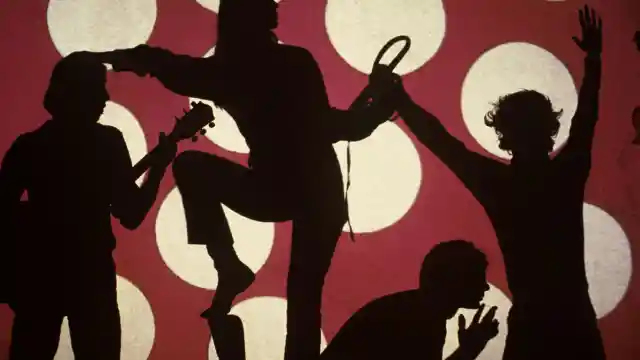
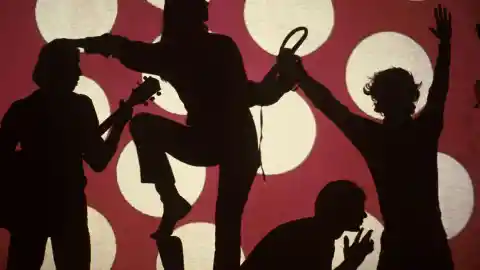
Number Four: The Clash. The Clash were unique as they defied the punk stereotype of three chord rock songs and often incorporated shades of reggae, funk and rockabilly. Lead by Joe Strummer, the band would far surpass other punk rock bands of the time. The Clash made their stage debut opening for the Sex Pistols in 1976. They would rejoin the Pistols at the 100 Club Punk Festival and again as the supporting act on the Anarchy tour. The band signed to CBS Records and began work on their debut simply entitled The Clash. While the record was deemed unsalable in the US, it turned out to be the best selling import that year.
Before stepping foot in the studio to record their follow-up, CBS requested the band clean up their act and record a more commercial album. Give ‘Em Enough Rope was met with positive reviews and charted well, but recording the album was a painstaking process. Then the band found mainstream success with London Calling. The double album hit on everything from reggae and ska to punk and rockabilly. The album found success on both sides of the Atlantic as “Train In Vain” charted in the US. But after such a stellar performance, the Clash felt the pressure, and it showed on Sandinista! as the album lacked any continuity. They atoned for the album with the single, “This is Radio Clash,” in 1981. The song further demonstrated the band’s versatility as it used mixed dub and hip hop.
In ’82 the band unleashed Combat Rock to critical and commercial success as the singles “Should I Stay or Should I Go” and “Rock the Casbah” both found their way onto the charts. The final album, Cut the Crap, was poorly received and probably not worth mentioning. They should’ve gone out on a high note with Combat Rock.
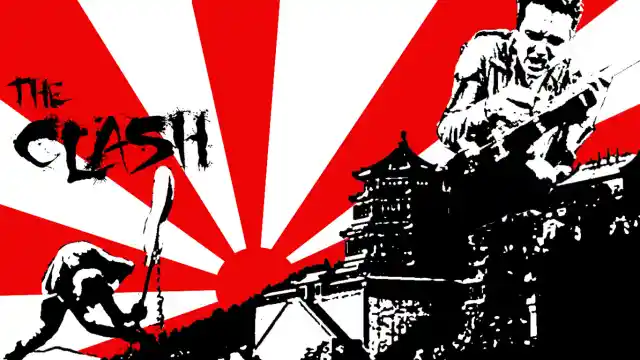
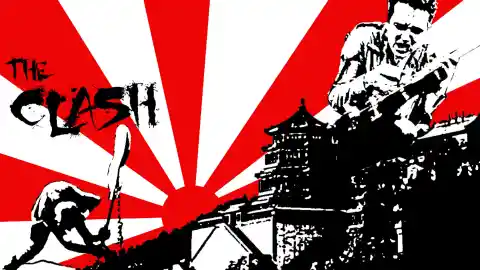
Number Three: Ramones. What can I say about the Ramones? They were the first full-fledged “punk” band and carried that title to the grave, literally. Formed in 1974, each member took on the pseudonym Ramone, though none of them were related. While commercial success eluded the band, they would go on to influence generations. Like most new New York bands, the Ramones had to gain recognition at Max’s Kansas City and then the infamous CBGB’s. Dressed in black leather jackets, ripped jeans and sneakers, the band didn’t look like anything we’d ever seen. Besides the look, the band’s songs were fast and short, rarely going over two minutes.
Their self titled debut was met with critical praise, but it was a commercial disappointed as it barely charted. But as a live act, nobody could touch them, and their impact was being felt on both coasts as well as the UK. In ’77 the band released a pair of albums, Leave Home and Rocket to Russia. The latter of the two did well and yielded the singles “Sheena is a Punk Rocker” and “Rockaway Beach.” On a roll, the band recorded Road to Ruin, which featured the now classic “I Wanna Be Sedated.” The band would continue through the 1980’s to record and tour, but the lineup changes were extreme. The 1990’s found the band recording less and less, and in 1995 they issued Adios Amigos as their final record. The Ramones played their final show in August of 1996.
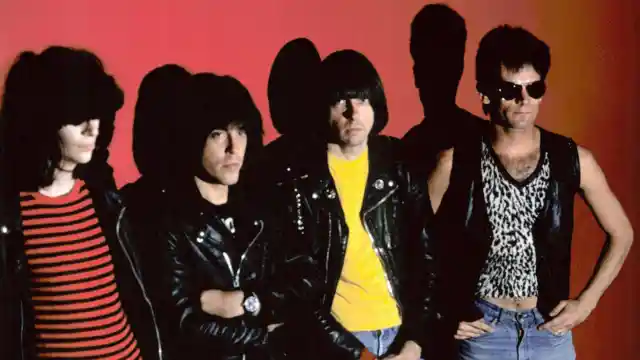
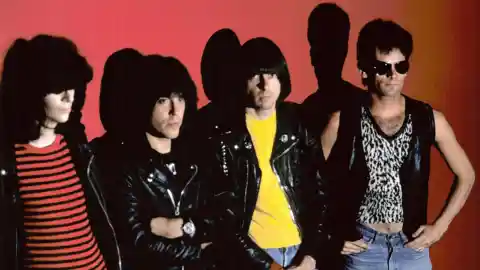
Number Two: Sex Pistols. The Pistols were the brainchild of Malcolm McLauren, and while the band would only last two years, they are credited with kick starting the punk scene in the UK. John Lydon aka Johnny Rotten was the perfect frontman as he snarled at audiences and evoked often violent reactions. Though he was the last to join, he would also be the first to leave. After the Pistols were established, the band signed with EMI to a two year contract. Their first single, “Anarchy in the UK,” established the band, and unlike other punk bands, the Pistols were politically astute. But the group’s offstage antics got them in trouble and EMI dropped the Pistols.
In ’77 the band threw out bass player Glen Matlock. He was to be replaced by Sid Vicious who had played drums with a couple of bands, but had limited, if any, experience playing bass. Needless to say, he was hired for his look and reputation in the punk scene. After blowing it with A&M records, the band found a home with Virgin who released “God Save the Queen” in 1977. The controversy over the song was immense, and several shops refused to carry it. Moreover, the recording was banned from the radio, which only added to the popularity of it.
Nevermind the Bollocks, Here’s the Sex Pistols was released in late 1977 and was praised by critics as it produced two top ten hits, “Holiday in the Sun” and “Pretty Vacant.” By 1978, the band were riding high and embarked on a U.S. Tour, but Vicious was now addicted to heroine, which lead to fist fights and barroom brawls on and off stage. The band played its final show in San Francisco where Johnny Rotten threw his mic down and walked off the stage. They would reunite, but now in their fifties, they could no longer pull off the “angry punk rockers” persona.
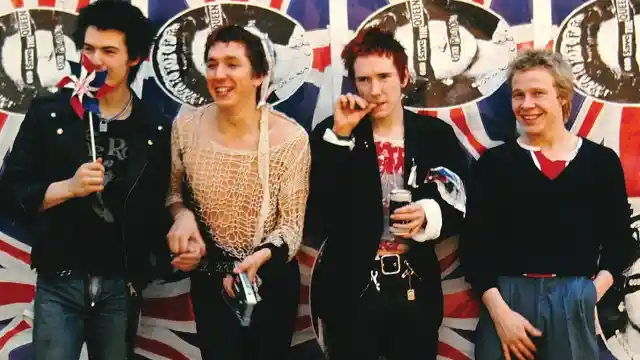
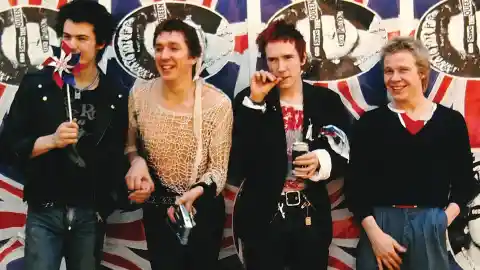
Number One: The Stooges. Again, not known as a “punk” band, the Stooges paved the way for bands to follow. Led by the wild Iggy Pop, the band took hard rock to the extreme. They formed in 1977 in Detroit, Michigan after seeing MC5. The band didn’t fit in with the “summer of love.” Their sound was rambunctious, heavy, and Pop’s onstage antics were legendary. The band signed to Elektra Records in 1978, and they started working on their self-titled debut. Though the record went vastly ignored, that didn’t phase the boys as they started on their follow-up, Fun House. With the addition of a sax player named Steve Mackay, the album better represented the Stooges’ sound.
While the album initially wasn’t well received, it would go on to become a favorite for many aspiring musicians, including Jack Black. However, the band’s antics got them in trouble and with the introduction of heroine, they became highly unpredictable. Elektra dropped the band from their roster. David Bowie met Pop at the height of the Ziggy success and asked him to go to London, where he got the group a record deal with Columbia. Now known as Iggy and the Stooges, they released Raw Power. Again, it was a critical failure, but would go on to influence early punk bands a year after its release. The group disbanded in early 1974 leaving only a legacy as innovators.
